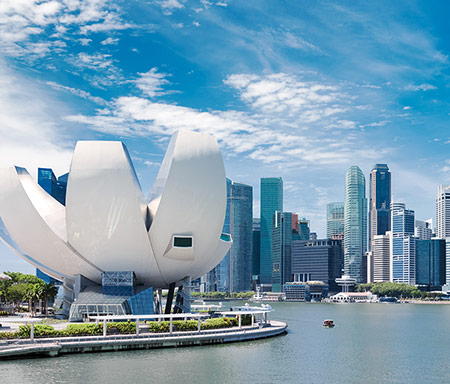
Asia’s resilient cities report 2021
Over the past 16 months we have seen cities all over the world become ghost towns, as lockdowns designed to combat the coronavirus have been imposed by governments and people have stayed away from crowded centres.
This has caused some commentators to suggest that large cities may no longer be the places people want to live. There has been evidence to back this up; in the US, there has been a migration from the large cities, such as New York and Chicago towards suburban locations and also to smaller, more liveable, cities, such as Austin, Texas.
Until the pandemic is over, it is hard to say whether such trends are permanent, or whether they will occur in other regions. In the short term, Asia Pacific has by no means shaken off the COVID-19 pandemic, although the picture varies from China, which seems largely recovered, to the tragic renewed outbreak in India. The main challenge for Asia Pacific nations and cities is to get their populations vaccinated in order to allow the return of normal activity and travel.
For real estate investors, however, it is the longer term which matters and we believe Asia Pacific cities will thrive after the pandemic and continue to provide prime opportunities across a range of sectors, thanks to four key factors.
The demographics of Asia Pacific’s cities vary widely between nations, however the region has some of the youngest urban populations in the world. As an example, 42% of Jakarta’s population is under 24, which gives the city tremendous impetus for growing population size and wealth in the future.
Urbanisation has been arguably the main driver of growth in Asia Pacific over the past three decades, as hundreds of millions of people have moved from rural areas to take on more productive roles in cities. Since 1978, the percentage of Chinese people living in cities has more than tripled to 60% and this is predicted to grow to 70% by 2030, which means 130m people will move to cities over the next decade, requiring housing, retail and office space. This is not limited to developing markets: Japan’s largest cities are growing thanks to urbanisation, even as the overall population falls.
The daily commute is seen as one of the negative factors for cities, however modern Asian cities are well served by public transport and governments across the region continue to improve transport infrastructure. For example, Bangkok has 124km of new transit lines under construction, to add to a current 170km, with a further 257km planned. Shanghai intends to add nine metro and rail lines by 2023. These transport links will make residents’ journeys quicker and easier, while providing hubs for new development.
A key factor in Asia Pacific’s urban success is its embrace of mixed-use development. New developments tend to be linked to transport nodes and feature a mix of employment, retail and residential uses. Mixed use developments are more walkable and liveable. Increasingly, retail space is becoming F&B, leisure and education space, widening the mix of uses and making developments more resilient. Even single towers feature a mix of uses: Singapore’s 18 Robinson Road includes office, retail and F&B uses as well as green space.
These factors combine to make the cities of the Asia Pacific region ever more prosperous and liveable. Despite the challenges of the present, the future of Asian cities is secure.
Further reading:
Savills Hong Kong Research
Contact Us:
Simon Smith



